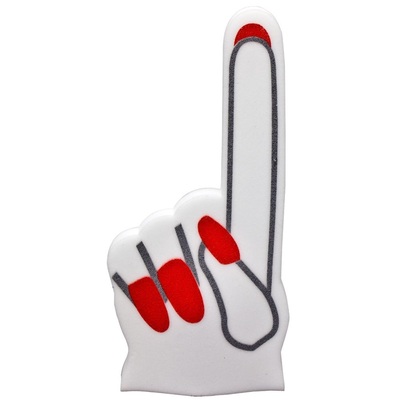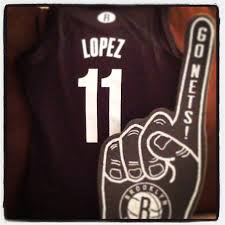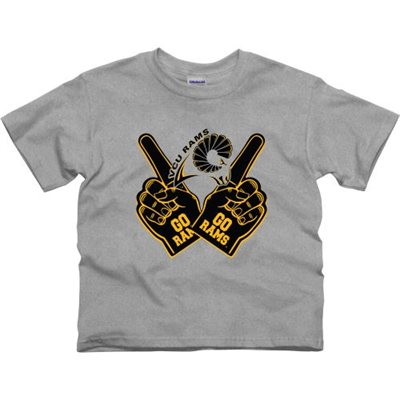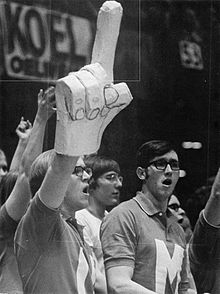|
It's that time of year again, March Madness where NCAA men's basketball teams go head to head at the big dance. Starting with 64 college and university teams, thereby trickling down to 32, 16, 8, 4, 2, finalizing with one winner, this could be anyone's year. While these otherwise unknown college and university basketball teams compete, so does the NBA, NHL, NASCAR, along with MLB's opening day commencing baseball season March 31, 2014. Aside from a saturation of sports, with this comes commercialized peanuts and Cracker Jacks, and the classic Foam Finger.
Sure Miley Cyrus gave herself the old fashioned foam finger fuck this past summer at the MTV Music Awards. As a result, Foam Finger sales have blasted through the roof. Never before have Chinese manufactures been so inundated with orders, there isn't enough child labor and foam to go around. They're so overwhelmed they can't keep up, outsourcing to Vietnam and Cambodia. Just like the light bulb, there are several contributors to the Foam Finger, Steve Chmelar who made a papier mâché #1 hand in 1970, Geral Fauss who made a series of plywood fingers in 1978 and later manufactured foam fingers at his company Spirit Industries, and then Robert Keith with a foam finger patent filed in 2007. Aside from the defense sign in the form of a wooden fence and the letter D, there has never been a more useless invention. Until recently the team spirit market was untapped, but now you got everything from koozies to Foam Fingers. Sure buying a Foam Finger may seem harmless because nobody can poke their eye out and it will shut your damn kid up, but once again I poise the question "do we need all this stuff?" Maybe rather than buying a finger blaster, make a papier mâché hand, it's fun and biodegradable. Plus you'll have more in your wallet and less crap in your garage, attic, and or stoop sale, maybe even spend creative time with the kids.
0 Comments
Leave a Reply. |
LAJ
100 Objects of Popular and Material Culture is an blog exploring the manifestations of human consumption and commodity-ization. The purpose of this experiment is to explore material and popular culture in contemporary society by using objects and concepts to prompt wider questions and reflections. So by emulating The British Museum's and Neil MacGregor's format of A History of the World in 100 Objects I plan to satirically analyze and reinterpreted 100 material culture objects over the course of 2014. Material Culture is the study of our culture's consumption of stuff; namely the manifestation of culture through material productions where people's perceptions of objects is socially and culturally dependent. With this, objects reflect conscious and unconscious beliefs on the the individuals who fabricated, purchased, or used them, and by extension the society where they live. So examining materiality, cultural truths and societal assumptions may be discovered. As anthropologist Arjun Appaduai states "in any society the individual is often caught between the cultural structure of commodity-ization and his own personal attempts to bring a value and order to the universe of things." Objects and commodities make up a much larger symbolic system consisting of want and need, socio-economic status, fashion, etc. Often times form follows function whether the commodity, market, and or consumer forever evolve around one-another. Philosopher Pierre Bourdieu's theories of capital flow full circle; where regardless if you are a minimalist or a hoarder the world is made up of things and everyone will leave their footprint on the earth. So by humorously analyzing marketed objects and concepts, hopefully this blog will provide further incite into ideas of over-consumption, a disposable society, consumerism vs. anti-consumers, planned obsolescence vs. sustainability, as well as the greater good of mankind and future generations. Archives
March 2015
Categories |






 RSS Feed
RSS Feed